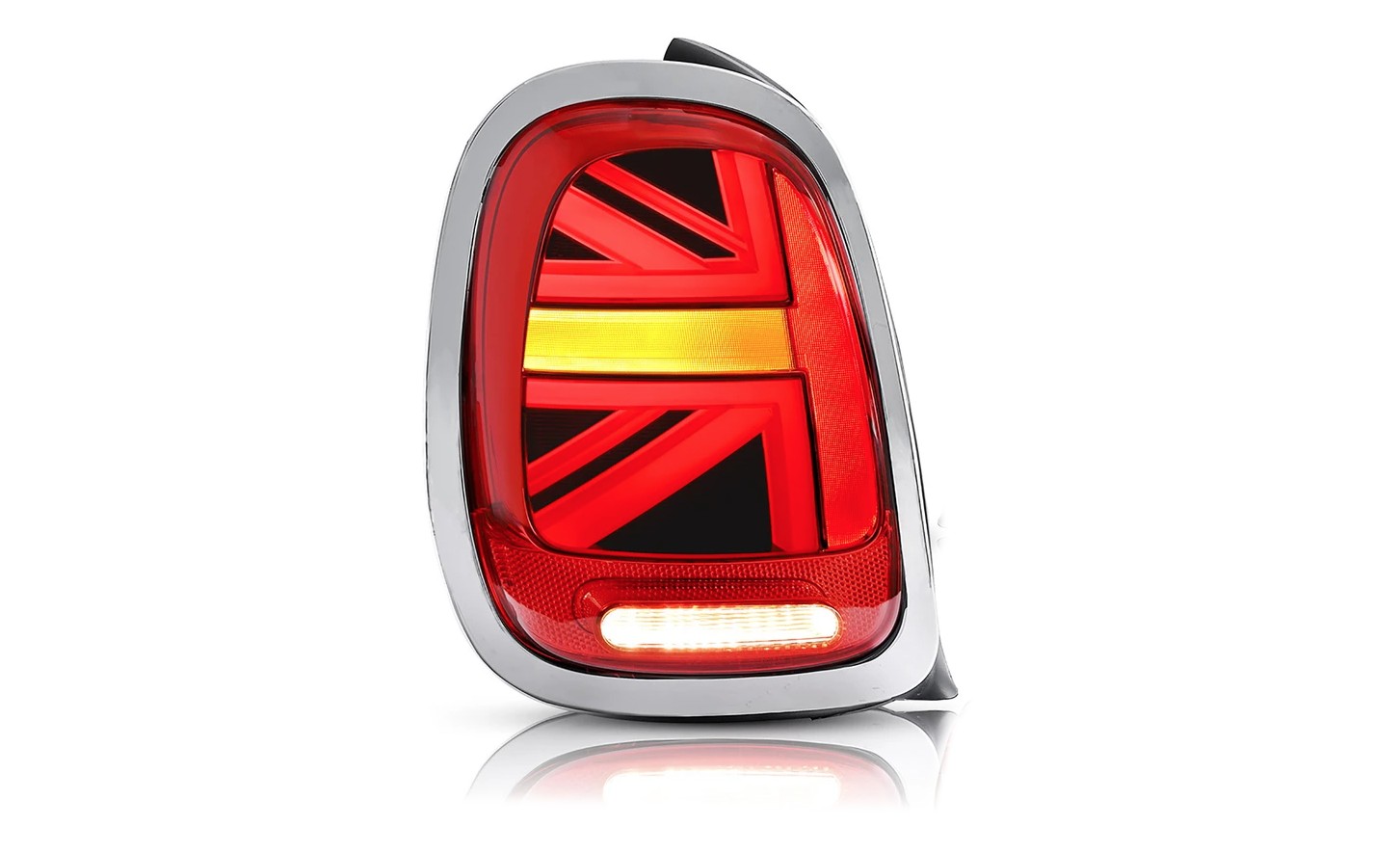Mini Cooper, a brand synonymous with quirky British charm, has long been lauded for its distinctive design elements. From its bulldog stance to its retro-inspired interiors, the Mini stands out in a sea of homogenous automobiles. However, when it comes to automotive lighting, particularly the rear turn signals on recent models, a debate sparks among enthusiasts and casual drivers alike. Are Mini Cooper Turn Signals a stroke of design genius or a confusing misstep? Let’s delve into the perplexing world of Mini’s Union Jack taillights and their rather… unique approach to indicating turns.
The buzz started, as many automotive discussions do these days, online. A tweet showcasing the rear lights of a Mini Cooper in action caught the attention of car aficionados, and not for the reasons Mini might have hoped. The image revealed the Mini’s Union Jack taillights illuminating to signal a turn, but in a way that seemed counterintuitive, even baffling to some.
For context, Mini introduced the Union Jack taillight design to celebrate its British heritage. The full taillight assembly cleverly incorporates the iconic British flag motif. Many initially assumed, and reasonably so, that the central horizontal bar of the Union Jack would function as the turn indicator, mirroring designs seen in European-spec Minis and aftermarket versions. This approach, utilizing a central illuminated strip, is both aesthetically pleasing and functionally clear.
However, Mini opted for a different, more… creative route. Instead of a straightforward illuminated bar, the turn signal is indicated by three segments within the Union Jack design lighting up to form an arrow shape. Now, arrow-shaped turn signals are not inherently problematic. In fact, they are often praised for their clarity, effectively communicating the intended direction of turn, as seen on emergency vehicles.
The catch, and the source of much head-scratching, lies in the direction these arrows point on the Mini Cooper. Prepare for a moment of cognitive dissonance: the arrows point away from the direction of the intended turn. A right turn signal illuminates an arrow pointing left, and vice versa.
Yes, you read that correctly. While the lights do blink, fulfilling the basic function of a turn signal, the visual cue of the arrow actively contradicts the intended direction. It’s a design choice that seems to defy logic. The very shape meant to enhance clarity instead introduces a layer of confusion.
One might argue that drivers will quickly adapt and interpret the blinking lights as standard turn signals, regardless of the arrow’s direction. And that’s likely true. The vast majority of drivers will probably understand the signal’s purpose in context. However, the inherent purpose of a turn signal is to communicate intent clearly and instantaneously. Introducing a design element that requires a moment of mental recalibration seems counterproductive, even if it’s just a minor cognitive hurdle.
To understand the rationale behind this design, or perhaps to confirm if it was indeed a deliberate design choice and not, as some jokingly suggest, a mischievous prank by the design team, an inquiry was made to Mini. The response from a Mini representative highlighted the brand’s commitment to its British heritage through the Union Jack taillights. Regarding the turn signal pattern, the official statement suggested confidence in driver understanding, particularly when viewing the full rear of the vehicle, and claimed positive customer feedback on the taillight design.
While Mini maintains that there are no issues and customers are happy, the design remains a point of contention for many. It’s a curious case where style seemingly trumps intuitive functionality. While not likely to cause widespread accidents or lead to a recall, the Mini Cooper’s opposite-pointing arrow turn signals serve as a quirky, if slightly perplexing, example of automotive design. It prompts the question: Is it a clever nod to unconventional British humor, or simply a blinkered approach to turn signal design? Perhaps, it’s a bit of both. One thing is certain: the Mini Cooper turn signal design is guaranteed to spark a conversation, even if it’s just a slightly bewildered one.

